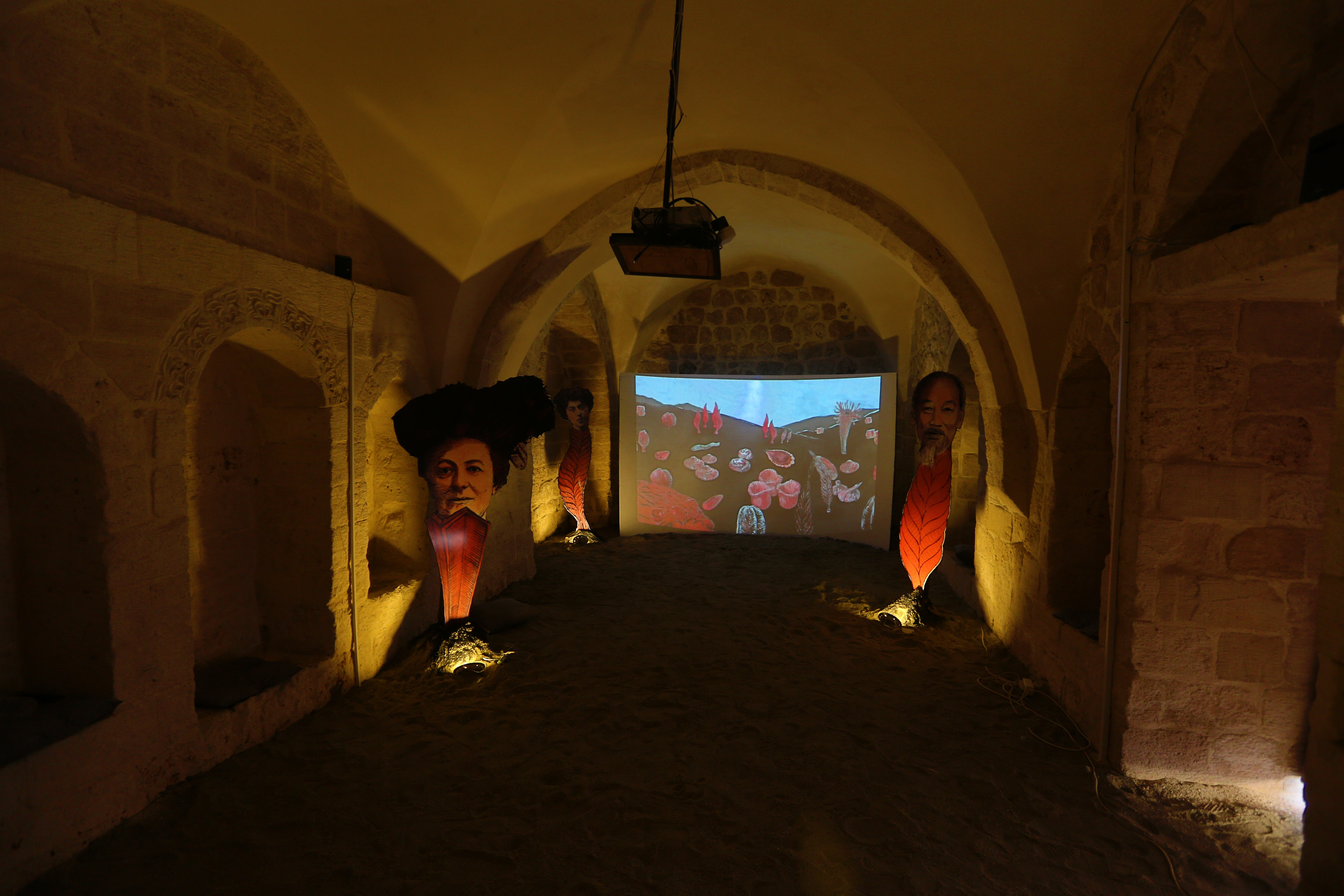
Jonas Staal is a visual artist whose work deals with the relation between art, propaganda, and democracy. He is the founder of the artistic and political organisation New World Summit (2012–ongoing).
Together with Florian Malzacher he co-directs the training camp Training for the Future (2018-ongoing), and with human rights lawyer Jan Fermon he initiated the collective action lawsuit Collectivize Facebook (2020-ongoing). With writer and lawyer Radha D’Souza he founded the Court for Intergenerational Climate Crimes (2021-ongoing)and with Laure Prouvost he is co-administrator of the Obscure Union.
His projects have been exhibited widely at venues such as the Stedelijk Museum in Amsterdam, M_HKA in Antwerp, Moderna Museet in Stockholm and the Nam June Paik Art Center in Seoul, as well as the 7th Berlin Biennale, the 31st São Paulo Biennale and the 12th Taipei Biennale.
Staal completed his PhD research on propaganda art at the PhD Arts program of Leiden University, the Netherlands.

94 Million Years of Collectivism, 2022. Video, 14 minutes 16 seconds.
Supported by the Mondriaan Foundation, Amsterdam, The Netherlands.
94 Million Years of Collectivism centres on the geological period known as the Ediacaran. The Ediacaran spans 94 million years (from 635 million years to 541 million years ago), and precedes the Cambrian period, which for a long time was credited to be the era that birthed complex lifeforms. It was only in the mid-twentieth century that Ediacaran fossils were discovered and identified as possibly belonging to a geological time frame of its own, a fact that was finally recognized in 2004.
While the Cambrian period is characterised by an explosive diversification of species with predation being the primary modus operandi, the Ediacaran constituted an interdependent non-predatory ecology. The soft-bodied underwater organisms of the Ediacaran, which were neither plants nor animals, took the form of the oval-shaped Dickinsonia which engaged in slow movement, or the plant-shaped Charnia which were “rooted” in the seafloor. These life forms probably existed through photosymbiosis, chemosymbiosis, and osmotrophy, recirculating nutrients amongst one another. In other words, the ninety-four million years of the Ediacaran period bypassed predation in its entirety, elaborating a shared ecology instead.
The current conditions of global capitalism are often naturalised through Neo-Darwinian narratives that uphold extractivist predation as the primal evolutionary drive. But the Ediacaran faces us with a fundamentally different cooperative ecology. Could we consider the Ediacaran as a form of pre-socialist socialism? Is it possible that in imagining more egalitarian forms of life, we simultaneously dream the Ediacaran? Conversely, did Dickinsonia and Charnia share dreams with Karl Marx, Rosa Luxemburg, Clara Zetkin, H? Chí Minh, Anuradha Ghandy, and Alexandra Kollontai, dreams of constant circulation and collectivisation of life across space and time?
